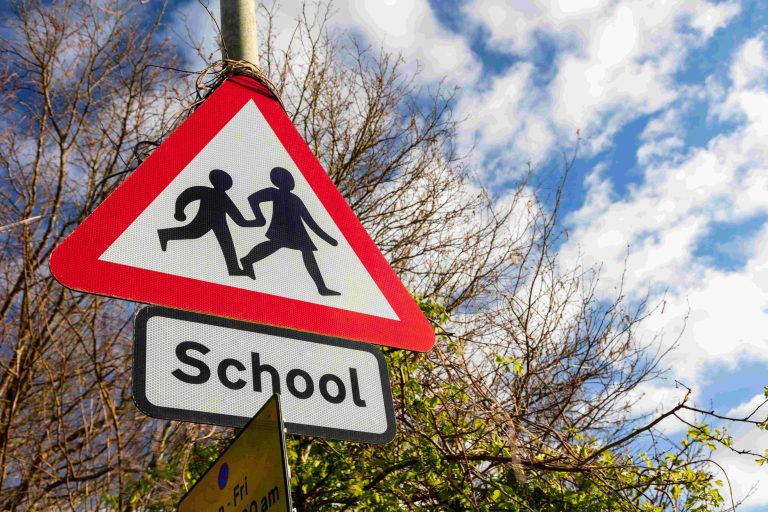BLOG
HSE statistics for education show significantly higher rates of stress – and a possible safety plateau
Written on 5 December 2022

Each year, the Health and Safety Executive (HSE) releases annual summary statistics for Great Britain, providing new insight into health and safety at work in 2022.
Alongside this, it produces a separate report for education, covering pre-primary, primary, secondary, higher, tertiary (e.g. university) and other education such as sport, music, arts, driving, vocational and adult education.
At a headline level, this year’s report reveals that, taking the annual average between 2019/20 and 2021/22, 160,000 education sector workers suffered from a new or longstanding case of work-related ill health and 50,000 workers sustained non-fatal injuries.
So what’s the detail, and where should those in the sector focus their efforts in 2023 in order to drive down the numbers?
Ill health on the rise
4.5% of education sector workers suffered from work-related ill health annually between 2019/20 and 2021/22, according to self-reports.
While not statistically different from the rate reported across all industries (4%), the rate for this latest period, which includes years affected by the coronavirus pandemic, was higher than the previous period, indicating that ill health is becoming a growing issue.
Echoing previous years, the two biggest causes of ill health amongst education workers were stress, depression and anxiety (59%), a known problem within the sector, and musculoskeletal disorders (19%), a set of diverse conditions affecting bones, joints, muscles, and connective tissues that may result in pain and loss of function.
In addition, the report reveals that in 2021/22, an estimated 74,000 education workers suffered from a work-related illness which they believe was either caused or made worse by the effects of the coronavirus pandemic. This equates to around 2.1% of the sector’s workforce, which is statistically significantly higher than the rate across all industries (1.5%).
Do you need support?
Speak to us for an honest, no obligation chat on:
0345 226 8393 Lines are open 9am – 5pm
Tackling the big problem: stress, depression and anxiety
Over the years, numerous studies have found school staff to be among the most stressed workers in Britain, and previous HSE statistics have consistently shown education to have amongst the highest levels of work-related stress, depression and anxiety.
This year’s report tells a similar story. It shows that stress, depression and anxiety remains the leading cause of ill health in education, with an average of 95,000 cases each year between 2019/20 and 2021/22.
While the HSE’s main report reveals stress, depression and anxiety is the number one cause of work-related ill health in the UK, its education statistics show that these conditions are more prevalent in the education sector, equating to 59% of all ill-health cases compared to 51% across all industries.
Indeed, with 2,660 cases per 100,000 workers, education ranks amongst the top three most impacted sectors, alongside human health and social work and public administration and defence, all of which have statistically significantly higher rates compared to the all-industry average (2,020 cases per 100,000 workers).
Jane Hallas, Head of Education at WorkNest says: “Widespread work changes, social isolation and personal upheaval caused by the pandemic has undoubtedly contributed to feelings of stress, anxiety and depression over the past few years. Those working in education will have felt this more than most.
“However, the HSE’s report points out that levels were already showing signs of increasing in the years prior to the pandemic, so there are certainly other factors at play. For teachers, this could include unrealistic expectations, a lack of support, stressful working conditions and an unmanageable workload made worse by staff shortages and larger class sizes.”
Delving further into the data tables, the HSE estimates that in education alone, stress, depression and anxiety results in 1,383 days lost annually, or half a day per worker.
Jane says: “Absence is a massive issue for schools right now, so it’s incredibly important that leaders take stress and other mental health conditions seriously. Even if staff remain in work, presenteeism – working while you are unwell – could have equally negative consequences.”
Speaking on schools’ legal obligations, Jane explains: “Under the Equality Act 2010, employers have a duty to make reasonable adjustments to help those suffering from mental health conditions, just as you would with physical health conditions, if their condition meets the legal threshold for disability, i.e. if it has a substantial and long-term adverse impact on their ability to carry out normal day-to-day tasks.
“Adjustments could include implementing flexible working arrangements, altering the employee’s hours or re-allocating certain tasks. It’s important to note that stress itself is not classified as a disability under the Equality Act – however, diagnosed mental health conditions such as depression and anxiety disorder may be covered by the Act, and these are often caused or made worse by workplace stress.”
Employers also have duties under health and safety legislation. Nick Wilson, Director of Health & Safety at WorkNest, adds: “Under the Health and Safety at Work etc Act 1974, all employers have a general duty to ensure, so far as is reasonably practicable, the health of their employees at work. This includes taking steps to make sure they do not suffer stress or any other mental health related illness as a result of their work.
“Local authorities, governing bodies, multi academy trusts and all other employers of teachers must consider the risk of stress among their workforce and take steps to remove or reduce this risk through changes to working practices or by introducing appropriate protective or supportive measures. It’s about being proactive, not reactive.”

Injury rate remains broadly flat
Education is considered a relatively low-risk sector. Still, according to self-reports, there were, on average, 50,000 non-fatal injuries to workers each year between 2019/20-2021/22, 12,000 of which (24%) resulted in absence of over seven days.
This means that around 1.5% of education sector workers suffered from an injury each year.
Nick Wilson says: “Whilst this rate isn’t statistically different than that for workers across all industries (1.6%), 50,000 worker injuries is by no means an A* report card – particularly when you consider that most, if not all, of these injuries will have been easily preventable by creating sensible and pragmatic risk assessments.
“The rate of self-reported non-fatal injury to education workers has been broadly flat in recent years, with no obvious cause. Perhaps we’ve hit a safety plateau, which are by nature difficult to understand. They can be driven by a culture of complacency, or the limits of leadership and/or technical ability. It may be that schools need additional, specialist support to break through this plateau and drive safety improvements in the New Year.”
Whilst the HSE’s education statistics don’t provide detail on accident type, we know from its summary statistics that the most common accident kinds across all sectors were slips trips or falls on the same level, and handling, lifting or carrying.
Nick says: “Given the nature of people’s roles within education, these are risk areas which schools must continue to risk assess, as even the most routine task could result in serious injury if hazards aren’t addressed and activities aren’t carried out safely. COVID management may have taken precedence over accident reduction efforts in recent years, so it’s important that schools revisit these ‘basic’ health and safety risks without delay in 2023.”
Thankfully, there were no fatal injuries to education workers in 2021/22, nor have there been any in the five-year period between 2017/18 and 2021/22. There were, however, three fatal injuries to members of the public in the past year.
Nick says: “When you think about workplace health and safety, you probably think about protecting your workers. However, under Section 3 of the Health and Safety at Work Act 1974, employers must also ensure, so far as is reasonably practicable, that persons not in their employment but who may be affected by their activities are not exposed to risks to their health or safety. This includes members of the public, contractors, and of course pupils who are inexperienced and likely to be less risk averse.”
A costly problem
The HSE estimates that the total economic cost of workplace injury and ill health to the education sector in 2019/20 was £1.8 million – and could be as high as £2.1 million. This accounts for 9% of the total cost to Britain (£18.7 billion).
It says: “Workplace injury and ill health impose costs, both financial (in terms of lost output and healthcare costs) and non-financial (the monetary valuation of the human cost of injury and illness in terms of loss of quality of life, and for fatalities, loss of life). Taken together, this gives the total economic cost to society. This cost is shared between individuals, employers and government/taxpayers.”
Jane says: “At a time when the education sector is facing widespread staffing shortages and financial pressures, the bigger concern for schools will be the number of working days lost and the impact this has on continuity of education and already constrained budgets.”
Indeed, the HSE’s statistics show that in education, around 2.5 million working days were lost each year due to workplace injury (21%) and work-related illness (79%) – equivalent to around 1.0 working days lost per worker. While not statistically different than the all-industry level (1.0 days), it is still a huge problem.
Nick says “It’s clear what the problem areas are within education. The sector appears to be making slow progress on tackling injuries (there’s been only a marginal decline since 2001) but it’s ill health that is the standout issue. Adopting report card terminology, schools ‘must try harder’ and make health and safety a top priority in 2023.”
Related Content

BLOG
Contractors and Volunteers | Are You Overlooking the Health and Safety of Non-Employees?
Specialist safety support for schools
Not sure your health and safety practices are up to scratch? With WorkNest, you’ll have access to a named professional, who will help you to understand your responsibilities and meet them confidently through our focused four-pillar approach to school health and safety management.
From unlimited advice and annual audits to a tailored policy and handbook, plus software and eLearning, our comprehensive service is the smart way to stay on top of safety and compliance in 2023.
To find out more, get in touch with our team on 0345 226 8393 or request your free consultation using the button below.
In the meantime, check out our case studies to discover how we’ve helped other schools, including The Manchester Grammar School and South Pennine Academies, transform their approach to risk management.











